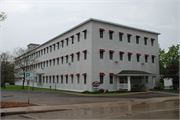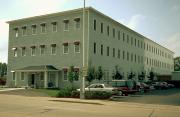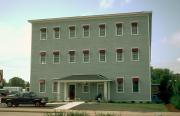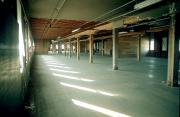| Additional Information: | A 'site file' exists for this property. It contains additional information such as correspondence, newspaper clippings, or historical information. It is a public record and may be viewed in person at the Wisconsin Historical Society, State Historic Preservation Office.
Locally designated landmark.
Built in 1919 but destroyed in a fire in 1931. Rebuilt as an enlarged replica of the original.
By the early twentieth century, the white pines near Stevens Point had been logged off, leaving vast swaths of cleared land or only hard-to-sell hardwood trees. To create a market for their own hardwoods, the Worzalla brothers, who owned large tracts of cutover land between Stevens Point and Wausau, decided to make furniture. In 1917 John Worzalla founded a furniture-making company, specializing in baby cribs and folding children’s swings, which he patented. Two years later, he built a factory in Stevens Point, at the edge of the city’s main commercial district.
In 1931, in the midst of the Depression, fire destroyed the Folding Furniture Works. But John Worzalla paid his own factory workers to erect a new, larger Folding Furniture Works on the same site. The long, narrow vernacular building looks more like a New England textile mill of the early nineteenth century than an industrial structure from the early twentieth. By 1931, fireproof masonry had long been the norm for factory construction, but Worzalla’s insurance covered only about 60 percent of the investment lost in the fire, so his workers clad its walls with narrow clapboards. Along each of the factory’s three stories, rectangular windows admit natural light onto the shop floors and create a rhythmic pattern of voids. Each window is filled with an unusual pane, in which the upper sash is filled with four smaller lights over four long ones. On the east side of the building, a one-story hipped porch supported by rectangular posts shelters two entry doors, which flank a central window.
In 1961, the factory closed for good, and the local Lullabye Furniture Company purchased the structure for use as a warehouse. More recently, it has been rehabilitated for apartments. |
|---|





